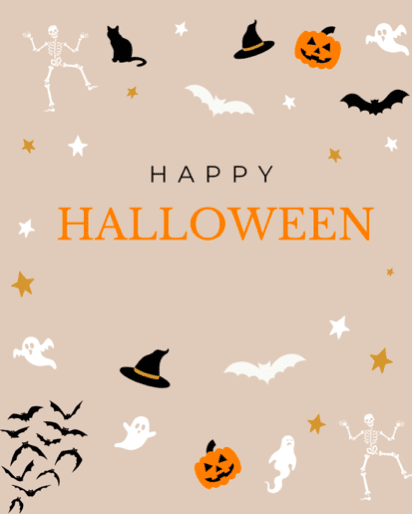Halloween, as celebrated today, is a vibrant tapestry woven from various cultural threads that stretch back centuries. Its origins can be traced to ancient Celtic traditions and have evolved over time to become the festive occasion we know today.
Ancient Celtic Roots
The earliest origins of Halloween can be found in the ancient Celtic festival of Samhain, which dates back over 2,000 years. Celebrated on the night of October 31, Samhain marked the end of the harvest season and the beginning of winter, a time often associated with death. Celts believed that on this night, the boundary between the living and the dead blurred, allowing spirits to roam the earth.
To ward off these spirits, people would light bonfires and wear costumes, often made of animal heads and skins. The ancient Celts also believed that the presence of otherworldly spirits made it easier for Druids, or Celtic priests, to predict the future. For a people entirely dependent on the natural world, these prophecies were a source of comfort during the long, dark winter.
Roman Influence
As the Roman Empire expanded into Celtic territories, they brought their own traditions which blended with Samhain. Two Roman festivals, Feralia, a day in late October when the Romans commemorated the passing of the dead, and Pomona, a celebration of the Roman goddess of fruit and trees, influenced the evolution of Halloween. Apples, a symbol of Pomona, became associated with the holiday, a connection still seen in the modern tradition of bobbing for apples.
Christian Adaptation
By the 9th century, the influence of Christianity had spread into Celtic lands. In an effort to replace the pagan holiday of Samhain with a church-sanctioned celebration, November 1 was designated as All Saints’ Day, a day to honor saints and martyrs. The night before it was known as All Hallows’ Eve, eventually shortened to Halloween.
Halloween Around the World
As people emigrated across the globe, they took their Halloween traditions with them, adapting them to new cultures and environments.
United States
In the United States, Halloween has grown into a major holiday characterized by costumes, trick-or-treating, and decorations. American Halloween is a blend of various cultural influences, including the Irish and Scottish traditions of playing pranks and wearing costumes.
Mexico
In Mexico, Halloween is closely associated with Día de los Muertos, or Day of the Dead, celebrated on November 1 and 2. This holiday honors deceased loved ones with elaborate altars, sugar skulls, and marigolds. Though distinct from Halloween, Día de los Muertos shares the theme of honoring the dead and is a vibrant celebration of life and memory.
Europe
In Europe, Halloween is celebrated in various forms. In Ireland and Scotland, traditional customs like bonfires and games are still popular. In England, Guy Fawkes Night on November 5 has overshadowed Halloween to some extent, but the latter is gaining popularity, with children dressing up and carving pumpkins.
Asia
In Asia, Halloween is a relatively new holiday but is gaining popularity, especially in countries like Japan and South Korea. In Japan, Halloween is celebrated with vibrant street parties and parades, focusing on the fun of dressing up. In South Korea, Halloween has been adopted by younger generations and expatriate communities, with themed events and parties.
Conclusion
From its ancient origins as a Celtic festival to its modern-day incarnation as a global celebration, Halloween continues to evolve. It serves as a unique reminder of humanity’s connection to the past and our shared fascination with the mysteries of life and death. As Halloween spreads to new cultures and countries, it gains new traditions and meanings, ensuring its continued relevance and enchantment.




